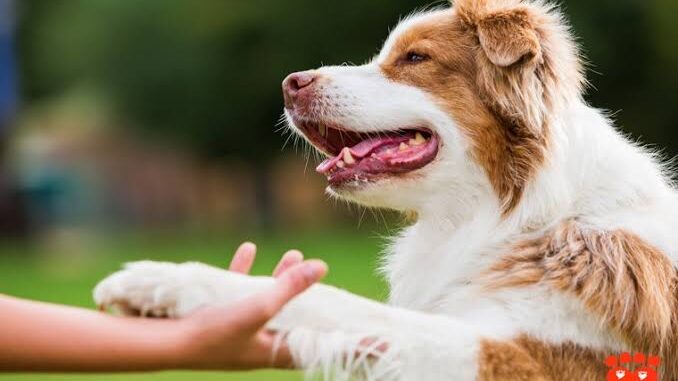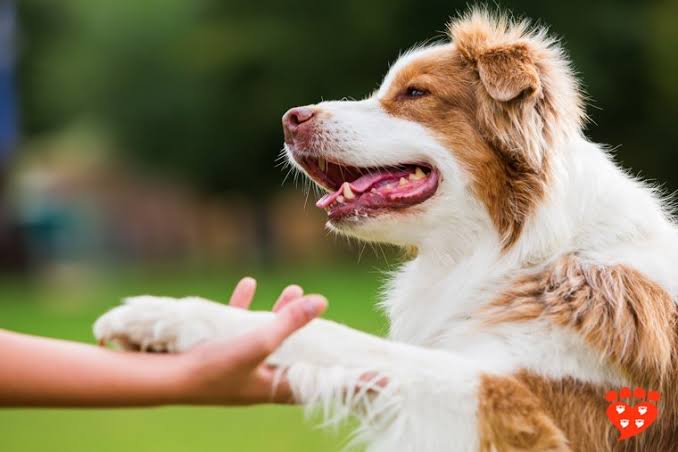
Essential Commands Every Dog Should Know: A well-trained dog isn’t just obedient it’s confident, safe, and a joy to live with. Whether you’re training a new puppy or brushing up with an older dog, mastering a few foundational commands can make all the difference in daily life. These essential cues help dogs navigate the human world safely and allow you, as the owner, to maintain control in various environments.

In this guide, we’ll explore the seven most important commands every dog should know, why they matter, how to teach them effectively, and how to troubleshoot common issues.
Why Basic Training Matters
Dog training isn’t just about obedience—it’s a form of communication. With consistent training, dogs learn to trust their owners, understand expectations, and reduce anxiety in unfamiliar situations. Well-trained dogs are:
- Safer in public spaces
- Better around kids, strangers, and other animals
- Easier to manage during emergencies
- More confident and less reactive
Most importantly, these seven commands form the core of a lifelong communication system between you and your dog.
Command 1: Sit
Why It’s Important:
“Sit” is a polite default behavior. It’s used when greeting people, waiting for food, or before crossing the street.
How to Teach:
- Hold a treat close to your dog’s nose.
- Slowly raise the treat above their head.
- As their nose goes up, their rear will lower.
- Once they sit, say “Sit” and give the treat.
- Repeat until they associate the word with the action.
Training Tip:
Say the command once. If the dog doesn’t respond, lure them gently instead of repeating. Practice in different environments.
Command 2: Stay
Why It’s Important:
“Stay” keeps your dog in place and is crucial for safety—like when someone opens a door or near traffic.
How to Teach:
- Ask your dog to “Sit.”
- Show your palm (like a stop sign) and say “Stay.”
- Take one step back. If the dog stays, return and reward.
- Gradually increase the distance and duration before rewarding.
Training Tip:
Use a release cue like “OK” or “Free” so the dog knows when the stay ends. Always reward after returning, not during the stay.
Command 3: Come (Recall)
Why It’s Important:
Recall can save your dog’s life. It ensures your dog returns when called—even in distracting or dangerous situations.
How to Teach:
- Use a long leash in a safe area.
- Crouch slightly and enthusiastically say “Come!”
- When your dog gets to you, give a high-value treat and praise.
- Practice indoors, then gradually move outdoors with more distractions.
Training Tip:
Never punish a dog after they come—even if they were slow. The goal is to make coming back positive every time.
Command 4: Down
Why It’s Important:
“Down” is a calm, submissive posture that helps with impulse control. It’s useful in public places, when guests visit, or during vet visits.
How to Teach:
- Ask your dog to “Sit.”
- Hold a treat near their nose, then move it to the ground and slightly forward.
- As the dog lies down, say “Down” and reward.
- Practice until the cue is understood without the treat lure.
Training Tip:
Train on soft, comfortable surfaces. Avoid pushing your dog down physically—it can build resistance.
Command 5: Leave It
Why It’s Important:
This cue tells your dog to avoid or ignore something, such as trash, food on the street, or dangerous objects.
How to Teach:
- Place a treat in your closed hand.
- Let the dog sniff, lick, or paw at it—say nothing.
- Once they stop trying, say “Leave it” and reward with a different treat from your other hand.
- Gradually move to leaving objects on the floor or at a distance.
Training Tip:
Be consistent. “Leave it” means never allowed, while “wait” means “not yet.” Practice both for clarity.
Command 6: Heel (or Loose Leash Walk)
Why It’s Important:
“Heel” helps dogs walk calmly beside you without pulling. It makes walks more enjoyable and controlled.
How to Teach:
- Start with your dog on your left side.
- Say “Heel” and begin walking. Use a treat at your side to keep them focused.
- Reward frequently for staying close and not pulling.
- Stop walking if they surge ahead. Resume only when the leash is loose.
Training Tip:
Use a harness or front-clip collar for better control during early training. Short sessions are best.
Command 7: Wait
Why It’s Important:
Different from “Stay,” “Wait” is used to pause your dog’s movement temporarily—like before exiting a car or crossing a door.
How to Teach:
- With your dog in a sit or stand, say “Wait” while holding your hand up.
- Take a small step back.
- If the dog holds position, reward and say “OK” to release.
- Practice at doorways, feeding times, and curbs.
Training Tip:
“Wait” builds impulse control and is helpful in everyday life. Use it regularly for routine activities.
Quick Training Guidelines
- Keep sessions short (5–10 minutes, 2–3x daily)
- Always end on a positive note
- Use high-value treats early on, then fade to praise or toys
- Be patient and consistent
- Practice in increasingly distracting environments once your dog knows the basics
READ ALSO: How to Introduce Two Cats Successfully
Common Mistakes to Avoid
- Repeating commands—This teaches dogs to respond only after the third or fourth cue.
- Training only indoors—Practice in real-world settings too.
- Punishing mistakes—Focus on redirecting and rewarding correct behaviors.
- Inconsistent cues or body language—Consistency is key.
FAQs
At what age should I start training my dog?
Training can start as early as 8 weeks old. Puppies are like sponges and can begin learning basic commands using treats, praise, and short sessions.
What’s the difference between “Stay” and “Wait”?
- Stay: Means “do not move until I come back and release you.”
- Wait: Means “pause for a moment,” typically to let you proceed first or assess a situation.
How long does it take for a dog to learn basic commands?
It varies by dog, but most can learn a basic command in 1–2 weeks with daily practice. Mastery under distractions may take longer.
My dog listens at home but not outside—why?
That’s common. Dogs don’t generalize easily, so commands must be practiced in various environments with gradually increasing distractions.
What kind of treats should I use for training?
Use high-value treats—something your dog doesn’t get daily. Small bits of cheese, cooked chicken, or commercial training treats work well.
Can older dogs learn these commands?
Absolutely. Dogs of any age can learn with consistent, positive reinforcement. Older dogs may take a bit longer but are fully capable.
How many commands should I teach at once?
Start with one or two commands. Once the dog is reliable, move on to the next. Avoid overwhelming them.
What if my dog ignores me during training?
- Lower distractions
- Use better rewards
- Shorten sessions
- Make sure your tone and energy are positive and clear
Lack of focus often means the training environment is too stimulating.
Are training collars necessary?
Most dogs respond well to positive reinforcement alone. Avoid choke, prong, or shock collars unless working under professional guidance.
Should I use hand signals with commands?
Yes dogs respond well to visual cues. Pairing words with consistent hand signals can speed up learning and improve reliability.
Leave a Reply
You must be logged in to post a comment.